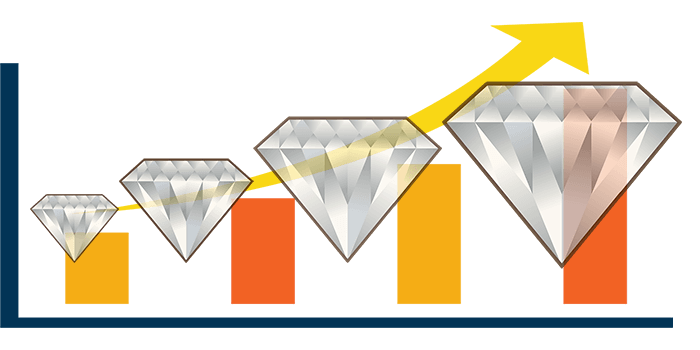Lab 5
1. Gapminder

The goal of the gapminder dataset is to explore the relationship between GDP, population, and life expectancy.
-
Load the
tidyversepackage and thegapminderdataset from thegapminderpackage. -
What are the mean life expectancies and populations seen by year for each continent?
-
Using
across(), can you get the min, mean, median, and max life expectancy for each country? -
Building off of your last answer, can you use
rowwise()andmutate()to calculate the range for each country, subtracting lifeExp_min from lifeExp_max? Arrange descending by your new lifeExp_range variable.- Yes, there is a
range()function you could have used in youracross()function call. While you can validate your max-min subtraction with that, I’d like you to practicerowwise()here!
- Yes, there is a
-
How many countries are there on each continent, excluding duplicates?
2. Diamonds
 The goal of the diamonds dataset is to see which characteristics are most influential on price.
The goal of the diamonds dataset is to see which characteristics are most influential on price.
-
Use
data()to load thediamondsdataset from ggplot2. -
According to the diamond documentation, the variable
depthis calculated using the formularowwise()andmutate(). Name your new variabledepth_check. -
Using
case_when(), create an indicator variableperfectof all diamonds that meet the following conditions:- cut is premium or ideal & color is D or E & carat is bigger than 1 & clarity is VVS1 or IF. create a plot with this new variable of carat (x) by price (y), colored by “perfect”. Here’s some code to get your started…
diamonds %>%
mutate(perfect = case_when((cut conditions) &
(color conditions) &
(carat conditions) &
(clarity conditions) ~ "Perfect",",
TRUE ~ "Not Perfect")) %>%
ggplot()